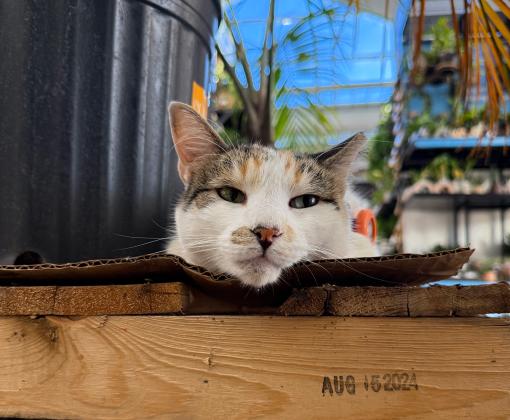
How to Teach a Dog to 'Back Up'
Walking backward or backing up doesn’t come naturally to most dogs, so it’s a dog training skill they have to learn. Teaching a dog to “back up” can come in handy when navigating tight spaces. It’s also a way to help dogs who do agility become more aware of their hind end.
Steps to train dogs to 'back up'
The goal behavior with this training plan is the dog learns to walk backward on cue until they’re released. Follow these steps to teach a dog to back up:
Step 1: Stand directly in front of the dog, and then prompt them to back up by taking a step toward your dog. As soon as the dog takes a step backward, click a clicker and reward with a treat. Make sure you take your body pressure off as well once you click — so click, move back to where you were standing originally, and then treat.
- Tip: If the dog sits down or moves to the side instead of walking directly backward, arrange some tables, chairs, or other objects into a narrow chute so that the only direction the dog can move is backward.
Step 2: Step toward the dog, and as soon as the dog takes a step backward, name the behavior with “back” or word of your choice, click, and treat.

See how your community is doing
- Tip: Once you name the behavior keep it consistent, so your dog is not confused by multiple cues for the same behavior.
Step 3: Offer the verbal cue without stepping toward the dog. If your dog does not offer the behavior on cue, go back to step 2 and continue practicing.
Step 4: Offer the verbal cue and when they take one step back, offer the cue once more to encourage them to take one more step backward. You might have to take an additional step toward them to encourage them to continue walking backward.
Step 5: Continue practicing varying distances until the dog will reliably continue to back up until you stop offering the verbal cue.
Reinforcing the cue
Once your dog learns the “back” cue, it's time to help them generalize the behavior in different contexts. This is called proofing, or reinforcing, the cue. Just because your dog can back up on cue in a quiet room in your house doesn’t mean they’ll be able to do it in a busy vet office, for example.
Start practicing in different places and with different people. Start off with the two of you in a slightly more distracting place than your home, and gradually work up to practicing in more distracting environments. Then, you can have other people work on the behavior with the dog, too. By practicing in different places with different people, the dog can learn to back up for anyone, anywhere. But don’t rush; take it at the dog’s speed.
